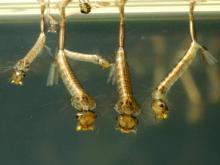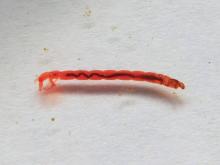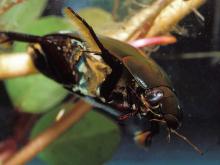Aquatic Invertebrates
Media

Species Types
Scientific Name
There are about 50 species of mosquitoes in our state.
Description
The larvae of mosquitoes, often called “wrigglers,” have a large head and thorax and a narrow, wormlike abdomen; they typically hang just below the water surface. When disturbed, they wriggle downward.
Media

Species Types
Scientific Name
Nearly 1,100 species in North America
Description
Midge larvae look something like thin aquatic inchworms. They can be clear, whitish, olive, tan, or bright red. They occur in a variety of aquatic habitats. As adults, they resemble mosquitoes but they never bite.
Media

Species Types
Scientific Name
Podura aquatica
Description
In early spring, clusters of water springtails float on the surface of quiet waters, on muddy banks, and on protruding objects. Adults are bluish gray with reddish appendages.
Media

Species Types
Scientific Name
About 32 North American species in the family Notonectidae
Description
Sometimes called “water bees” or “water wasps,” backswimmers are predaceous and can deliver a painful bite if mishandled. True to their name, they swim belly-up, and their backs are keeled like a boat, which makes back-swimming easier.
Media

Species Types
Scientific Name
Species in the beetle family Dytiscidae
Description
Like many aquatic insects, these large oval beetles prey voraciously on other aquatic organisms. Excellent swimmers, they fly well, too, and are often attracted to lights.
Media

Species Types
Scientific Name
About 125 species in North America in the family Corixidae
Description
Water boatmen are one of the few aquatic true bugs that are not predatory and do not bite people. Instead, they suck juices from algae and detritus. Only a few types eat other small aquatic creatures.
See Also
About Aquatic Invertebrates in Missouri
Missouri's streams, lakes, and other aquatic habitats hold thousands of kinds of invertebrates — worms, freshwater mussels, snails, crayfish, insects, and other animals without backbones. These creatures are vital links in the aquatic food chain, and their presence and numbers tell us a lot about water quality.





















